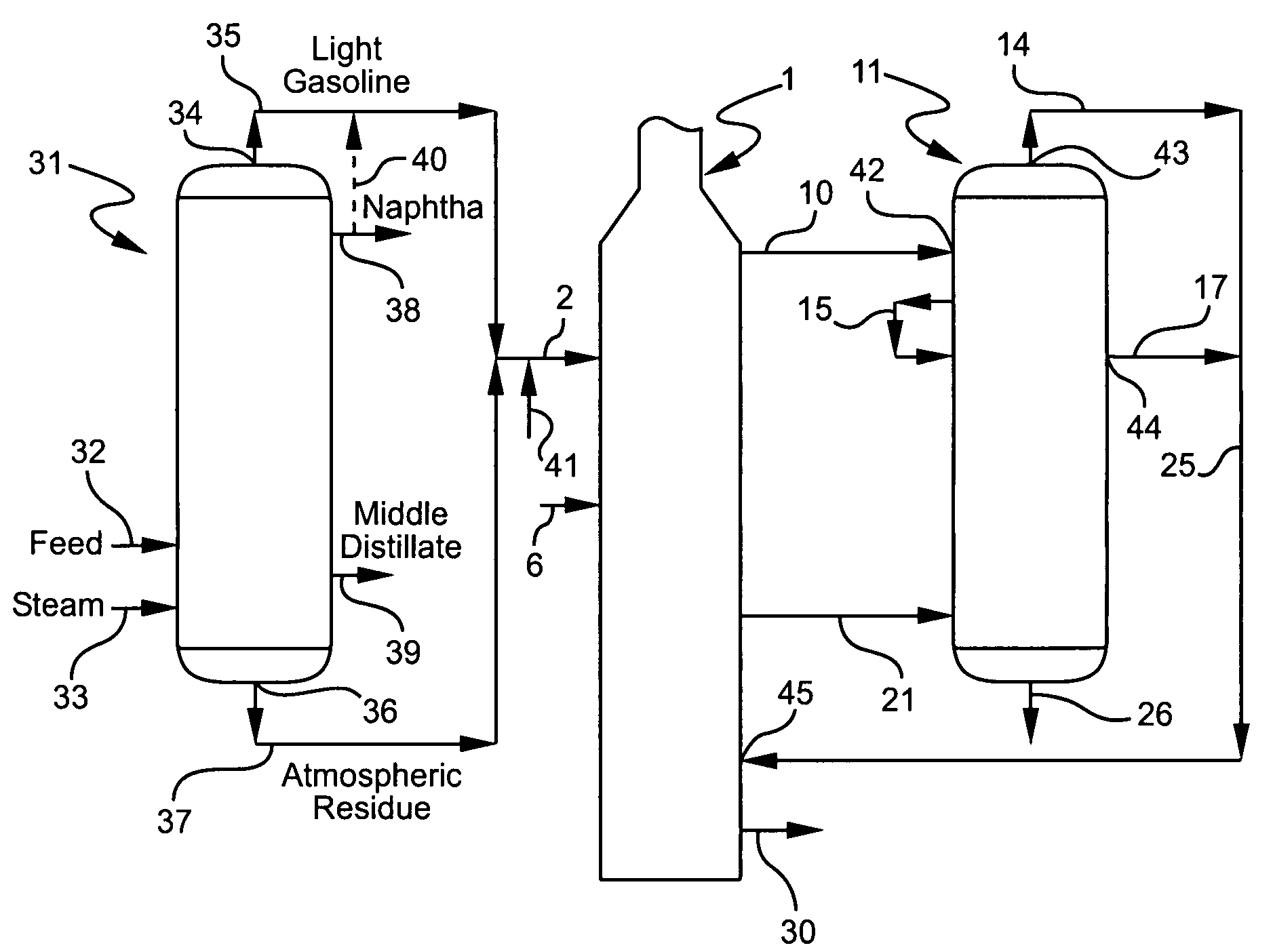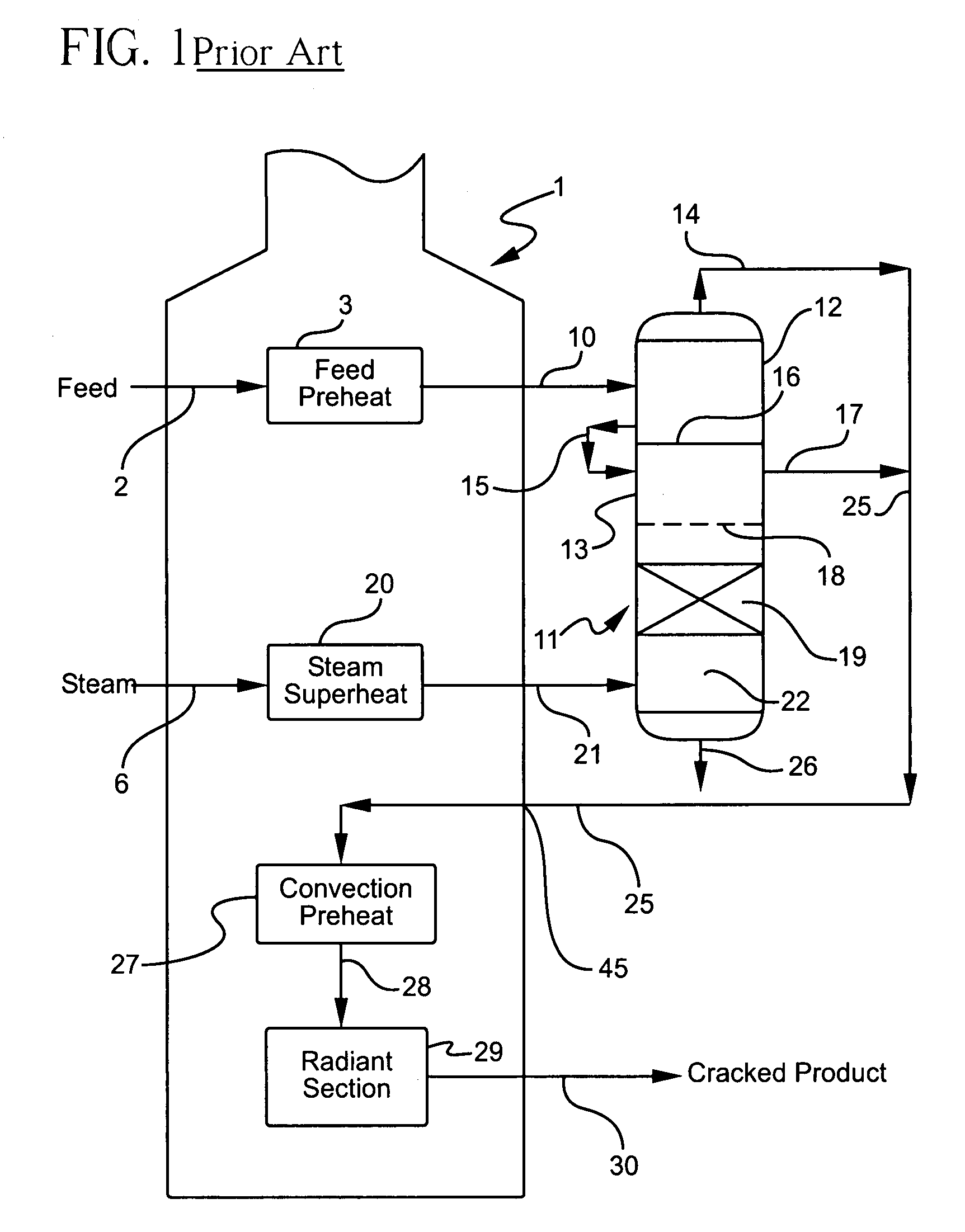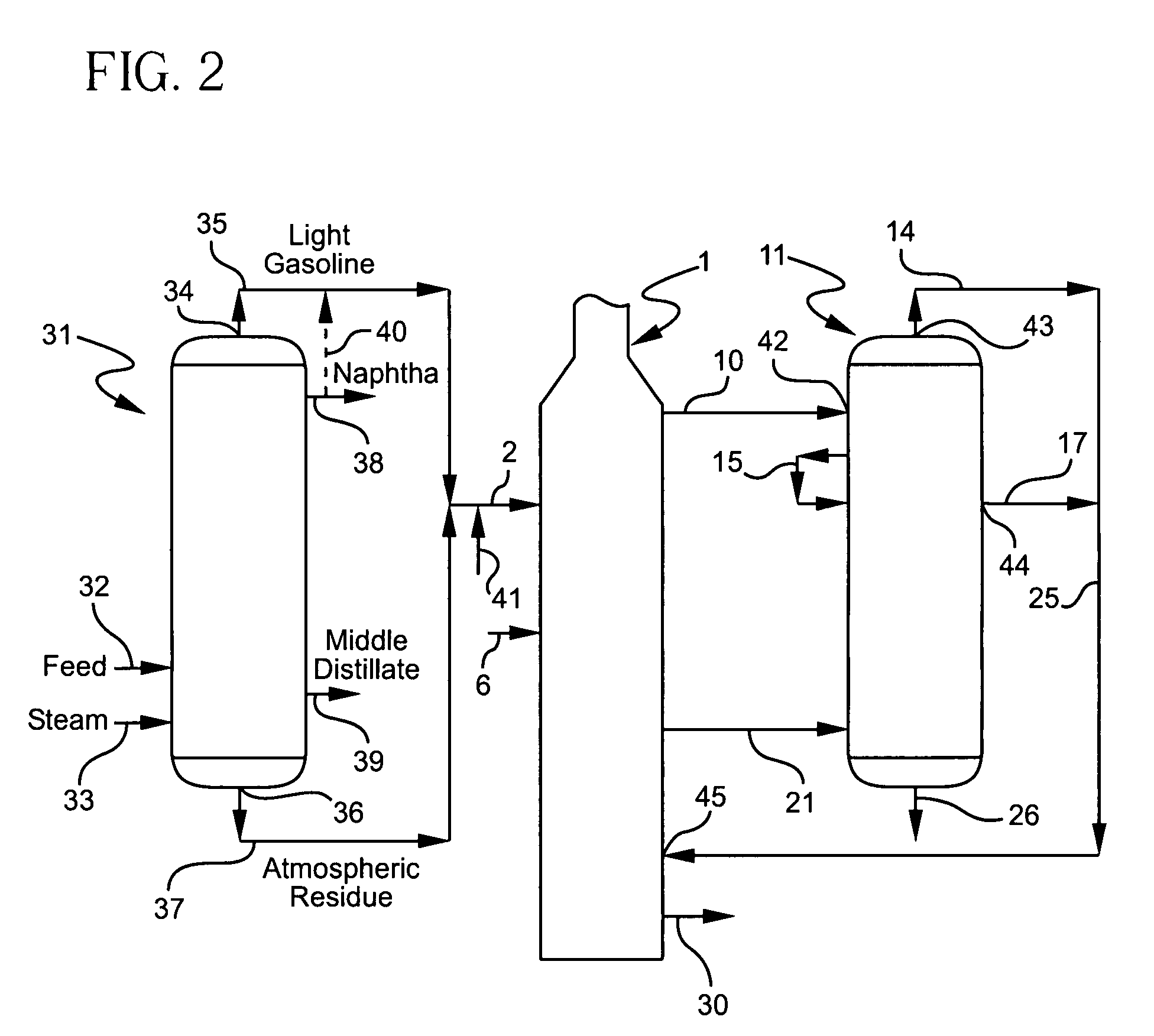Hydrocarbon thermal cracking using atmospheric distillation
a technology of atmospheric distillation and hydrocarbons, applied in the cracking process of hydrocarbon oil, thermal non-catalytic cracking, organic chemistry, etc., can solve the problem of fixed distillate recovery amount of a barrel of crude oil and inability to increas
- Summary
- Abstract
- Description
- Claims
- Application Information
AI Technical Summary
Benefits of technology
Problems solved by technology
Method used
Image
Examples
example
[0082]A conventional atmospheric distillation unit 31 is operated at a bottom temperature of about 650 F and atmospheric pressure using Saharan Blend crude oil as the feed 32 to this unit.
[0083]A Saharan Blend atmospheric residuum 37 is mixed in equal parts by weight with light gasoline 35 and naphtha 38, and fed into the preheat section 3 of the convection section of pyrolysis furnace 1. This feed mixture 2 is at 260 F and 80 psig. In this convection section feed 2 is preheated to about 690 F at about 60 psig, and then passed through line 10 into vaporization unit 11 wherein a mixture of gasoline, naphtha and gas oil gases at about 690 F and 60 psig is separated in zone 12 of that unit.
[0084]These separated gases are removed from zone 12 for transfer by way of line 25 to the convection preheat sub-zone 27 of the same furnace.
[0085]The hydrocarbon liquid remaining from residuum feed 2, after separation from accompanying hydrocarbon gases aforesaid, is transferred to lower section 13...
PUM
| Property | Measurement | Unit |
|---|---|---|
| temperature | aaaaa | aaaaa |
| pressures | aaaaa | aaaaa |
| pressure | aaaaa | aaaaa |
Abstract
Description
Claims
Application Information
 Login to View More
Login to View More - R&D
- Intellectual Property
- Life Sciences
- Materials
- Tech Scout
- Unparalleled Data Quality
- Higher Quality Content
- 60% Fewer Hallucinations
Browse by: Latest US Patents, China's latest patents, Technical Efficacy Thesaurus, Application Domain, Technology Topic, Popular Technical Reports.
© 2025 PatSnap. All rights reserved.Legal|Privacy policy|Modern Slavery Act Transparency Statement|Sitemap|About US| Contact US: help@patsnap.com



